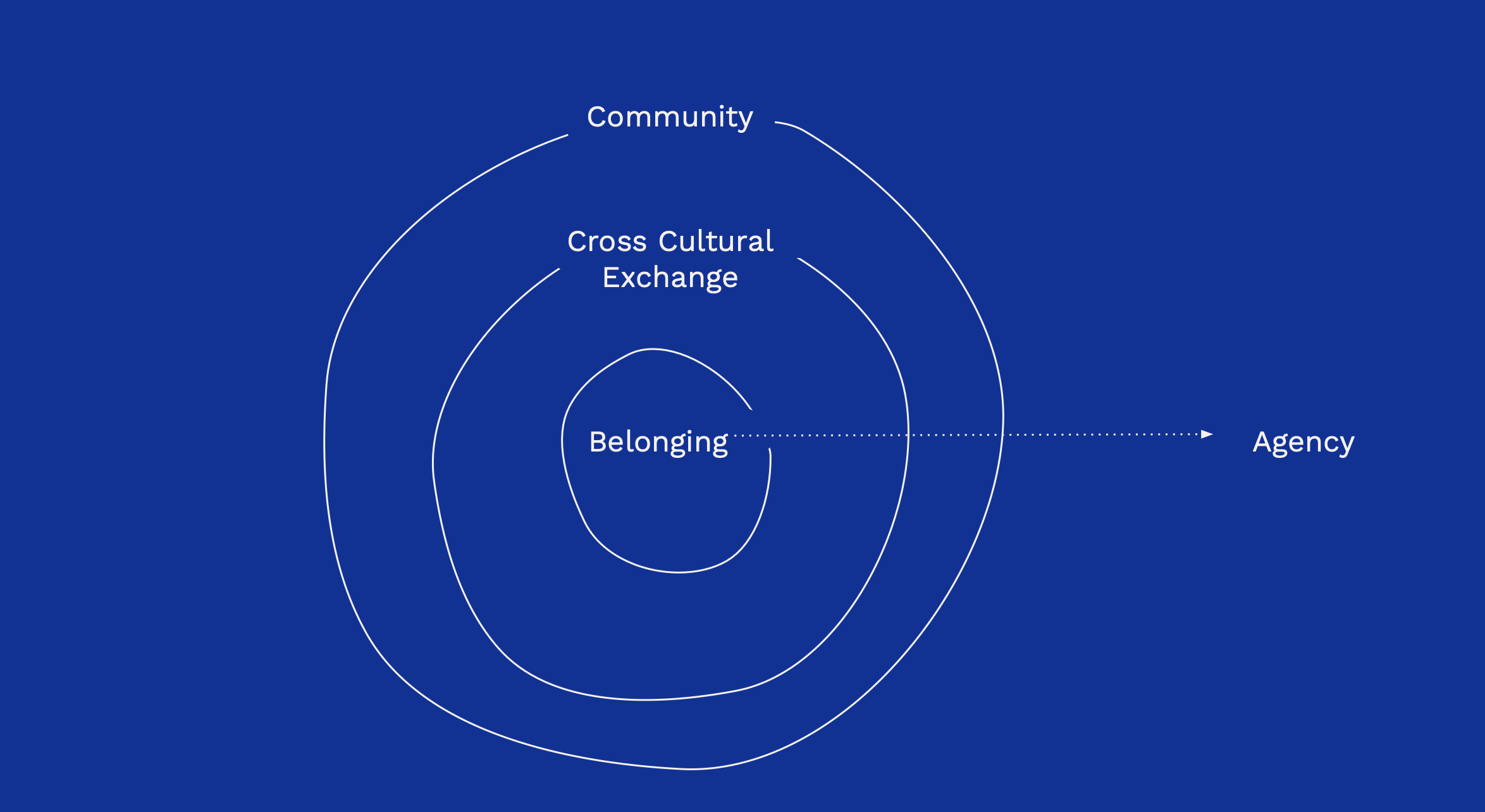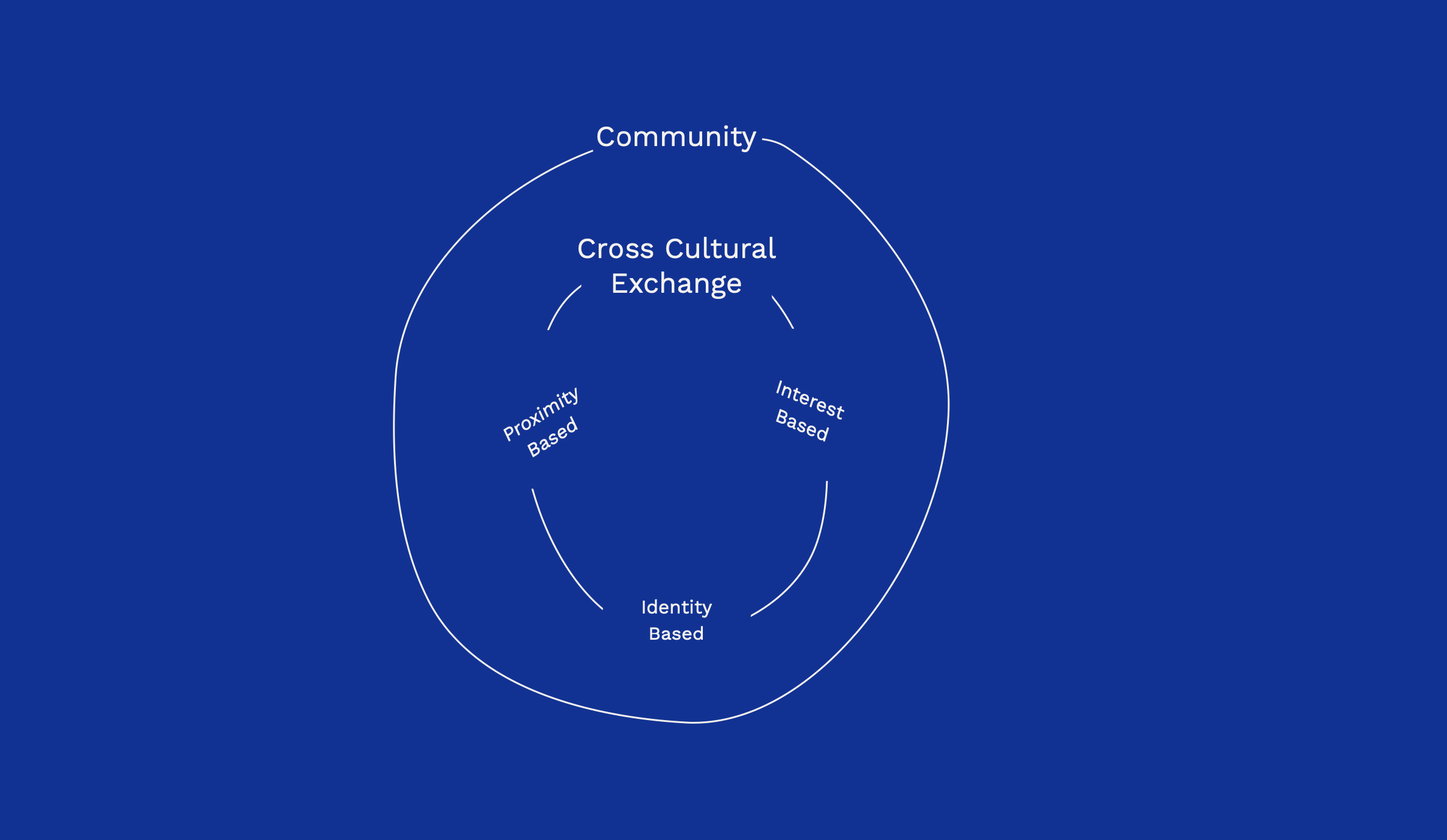How can we harness the multicultural power of 2nd generation Millennials to create community spaces where belonging thrives?
Type/ Design Research
Objective/ To research the systems and landscapes of building future proofed and resilienct communities by re-engaging community sense of belonging
Role/ Visual Design, Design Research
Team/ Annyelica Diaz, Kelly Ernst, John Jaimes, Kelly Lukes
Objective/ To research the systems and landscapes of building future proofed and resilienct communities by re-engaging community sense of belonging
Role/ Visual Design, Design Research
Team/ Annyelica Diaz, Kelly Ernst, John Jaimes, Kelly Lukes
Project Summary:
Lonliness and division amongst Americans are record high. In asking how might we design and futureproof new community spaces, we learned that 2nd generation Millennial experience, and this is an audience of people aged 25-40 with immigrant parents, haven’t been given a roadmap for what life looks like and are tasked with creating a new culture for themselves.
Taking a strategic approach to creating a sense of belonging by designing community- the 2nd generation millenial experience is critical in informing spaces that navigate intentional belonging.



Problem Space:
We are living in divided and disconnected communities. Those same divided communities collectively share existential threats. If we can’t work together, we will not survive together. Below are statistics from our research that help substantiate the urgency and severity around the decline of a sense of communit belonging, with a focus on urban areas and the experiences of 2nd generation millennial Americans:
- 56% of Americans are feeling less connected
to their community.
(Source: Airbnb Study, 2021)
- Loneliness is as important a risk factor for
early death as obesity and smoking.
(Source: New York Times, 2016)
- Nearly one-quarter of Americans are feeling
loneliness or emptiness and the majority are feeling
less connected to family and friends (53%), to their
communities (56%) and to the world (59%).
(Source: Airbnb Study, 2021)
to their community.
(Source: Airbnb Study, 2021)
- Loneliness is as important a risk factor for
early death as obesity and smoking.
(Source: New York Times, 2016)
- Nearly one-quarter of Americans are feeling
loneliness or emptiness and the majority are feeling
less connected to family and friends (53%), to their
communities (56%) and to the world (59%).
(Source: Airbnb Study, 2021)
-Nearly 70% of the country’s largest cities
are more racially and ethnically diverse than
they were in 2010. And by 2050, 89% of the
U.S. population is projected to live in urban areas.(Source: University of Michigan: U.S. Cities, September 2021)
- 2nd generation Americans make up 12% of the
nation’s population. And by 2050, they are
projected to account for 18% of it.(Source: Pew Research Center: 2nd Generation Americans, February 2013)
are more racially and ethnically diverse than
they were in 2010. And by 2050, 89% of the
U.S. population is projected to live in urban areas.(Source: University of Michigan: U.S. Cities, September 2021)
- 2nd generation Americans make up 12% of the
nation’s population. And by 2050, they are
projected to account for 18% of it.(Source: Pew Research Center: 2nd Generation Americans, February 2013)
Our team focused its efforts on the idea of Designing Belonging. We believe belonging exists on a spectrum, not a binary, that allows for a nuanced experience. Our research journey led us to focus on the 2nd generation millennial experience. This is an audience of people aged 25-4 with immigrant parents. They haven’t been given a roadmap for what life looks like and are tasked with creating a new culture for themselves. We’re taking a strategic approach to creating a sense of belonging by designing community-based spaces through the lens of 2nd generation Millennials - a group whose upbringin taught them how to navigate intentional belonging.
“Recognizing how important genuine connection is to the wellbeing of our communities, designing belonging will be the key to our collective survival within the physical and digital community ecosystems of the 21st century.”
Read the Report ︎︎︎